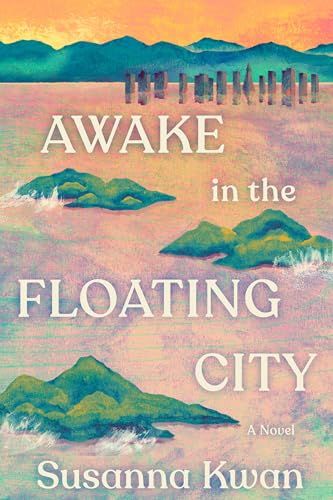A Haunting Yet Beautiful Portrait of a Climate Devastated World
⚓ Books 📅 2025-07-30 👤 surdeus 👁️ 14Have you ever read a book where you felt completely transported into its world? The pages before you disappear, as do the walls around you. Instead of your usual life, you’re there, with the characters, living in that curious world beside them. This is how I felt reading Susanna Kwan’s new debut novel, Awake in the Floating City. Her atmospheric and affecting writing paints a tragic and memorable portrait of a dying world. Whenever I returned to reading it, I felt myself merge back into its landscape as if I’d never left.

Awake in the Floating City by Susanna Kwan
Kwan sets her story in a not-too-distant future where the climate has grown increasingly chaotic. Erosion crumbles city shorelines, and a continuous rain has triggered devastating floods, including the one that swept away the protagonist Bo’s mother. The few people who have chosen to remain in San Francisco travel on bridges between high-rise buildings and shop for produce on rooftop markets. While some attempt to carry on in this deteriorating city, many others have migrated away.
Chinese American artist Bo lives in one of these buildings, despite her cousin’s and uncle’s pleas to join them in Canada. In the wake of her mother’s disappearance, Bo has lost her passion for art and for life. Kwan’s exploration of Bo’s depression is handled with thoughtfulness and care. Bo’s fluid feelings of crushing sadness and the void of apathy are poignant and relatable. And yet, Bo begins to get drawn back to herself when she accepts a job to work as a caregiver for a 130-year-old woman in her building named Mia. As her isolation gets interrupted by time spent with Mia, Bo reflects, “When she woke, her hands felt odd, like music was playing inside them. She wanted to draw,” (Kwan, p. 66). I love the idea of music playing inside your hands. Kwan beautifully captures that spark for creating art.
In the vein of Emily St. John Mandel’s Station Eleven, another favorite book of mine, Kwan blends themes of the apocalypse with art. She inspires us to reflect on the impact of art and what it can mean for people, even when the world is ending. As Bo cares for Mia, she finds herself wanting to create something for Mia. “She considered again what it might mean, to honor a dying person, to honor a disappearing world. What form would hold all the pieces of a life? Of a place? (Kwan, p. 149).
The backdrop of this novel is so compelling, as is Bo’s character journey. Bo navigates her grief over losing her mother, as well as her complicated feelings about moving and her ties to her home. She mourns both the people lost in her life, as well as her crumbling city. I appreciate how Kwan reflects on the importance of remembering. Despite the losses we face in life, whether they be people or places, Kwan emphasizes how it’s our job to remember them. We can’t always prevent loss, but we can honor their memories.
Kwan ties this remembering to the idea of being awake, as her title highlights. She shows how being awake relates to noticing what’s around you. If you really see the people and places in your life, with all of their ordinariness and allure, you can feel awake. You can remember them.
I don’t want to give too many spoilers away, but I will say that Bo creates some truly unique art for Mia by the end of the story. “Bo had made this for Mia, and Mia, receiving it, was the one who made it all real.” (Kwan, p. 281). And now, I have made this essay for you; thank you for receiving it and making it real, too. I hope this inspires you to go read Awake in the Floating City next.
🏷️ Books_feed